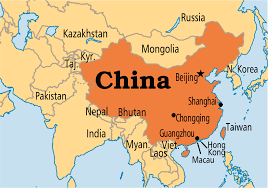China’s 2018 economic growth fell to a three-decade low, 6.4% year-on-year in the fourth quarter, from 6.5% in the previous quarter, according to official data released earlier this week.
hat would agriculture look like without livestock? It may sound like an extreme idea but it’s one farmers and all stakeholders in the entire agriculture value chain need to contemplate, says Dr. Robin White, an assistant professor of animal and poultry sciences at the Virginia Tech College of Agriculture and Life Sciences.
In 2017, the amount of frozen potatoes exported worldwide totaled X tonnes, increasing by X% against the previous year. In general, the total exports indicated a prominent increase from 2007 to 2017: it volume increased at an average annual rate of +X% over the last decade.
When policymakers talk about “green jobs,” they tend to default to examples in solar power, wind and other sources of renewable energy—or perhaps manufacturing and supply chain management. They’re less likely to talk about agriculture.
Sorry to burst your bubbly, prosecco lovers, but skyrocketing demand for the sparkling wine might be sapping northeastern Italy’s vineyards of precious soil — 400 million kilograms of it per year, researchers report in a stud.
That’s a lot of soil, but not an anomaly. Some newer vineyards in Germany, for example, have higher rates of soil loss, says Jesús Rodrigo Comino, a geographer at the Institute of Geomorphology and Soils in Málaga, Spain, who was not involved in the study. And soil erosion isn’t necessarily a bad thing; it can help generate new soils to keep an ecosystem healthy.
But the amount of erosion from Italy’s high-quality prosecco vineyards is not sustainable, he says. Letting too much earth wash away with rain and irrigation could jeopardize the future of the region’s vineyards, which produce 90 million bottles of high-quality prosecco every year.
Concerned that the recent bottle boom was taxing the local environment, a team led by researchers from the University of Padua in Italy calculated the “soil footprint” for high-quality prosecco. It found the industry was responsible for 74 percent of the region’s total soil erosion, by studying 10 years-worth of data for rainfall, land use and soil characteristics, as well as high-resolution topographic maps.
The team then compared their soil erosion results with average annual prosecco sales to estimate the annual soil footprint per bottle: about 4.4 kilograms, roughly the mass of two Chihuahuas.
Prosecco vineyards could reduce their soil loss, the scientists say. One solution — leaving grass between vineyard rows — would cut total erosion in half, simulations show. Other strategies could include planting hedges around vineyards or vegetation by rivers and streams to prevent soil from washing away.
Comino agrees, saying: “Only the application of nature-based solutions will be able to reduce or solve the problem.”
The global agriculture analytics market size is expected to grow from US$585mn in 2018 to US$1,236mn by 2023 at a compound annual growth rate (CAGR) of 16.2 per cent, according to the global analytics company ReportLinker.
Newsletter Subscribe
AGRI NEWS NET "LIVE" FEED
- CRA Media independence is the absence of external control and influence of any other media. Our capacity is to "make decisions and act according to its logic," and distinguishes us from the vast majority of media- Committed, focused and always on time- Good positive News you can trust- We not part of the negative sensational news media of the 2024 century.
- Suid-Afrika se suikerrietbedryf krimp stadig – die grondoppervlak onder suikerriet het van 430 000 hektaar in 2000 tot sowat 360 000 hektaar gekrimp; Daar is 22 500 suikerrietboere; Daar is 14 suikermeulens ;Die bedryf gee regstreeks werk aan 85 000 mense en onregstreeks aan 350 000; Die bedryf dra R16 miljard per jaar tot die bruto binnelandse produk by.
- This is AGRI NEWS NET- the world of Farming and Agriculture in your hand. "Good" News you can Trust- Updated 7 days a week- bringing you the latest News in Farming and Agriculture from all over the world. Tomorrow at 6 am South Africa time we wil be back with more "good news"-
- Many have passed away, and those who are still here are called-"the elderly."We were born in the 40s-50s-60s.We grew up in the 50's-60's-70'se studied in the 60s-70s-80s.We were together in the 70s-80s-90s.
Popular News Tags
AGRI NEWS NET AUDIO CAST Feeding-
- Impact of EU Farm to Fork Strategy on South African Farmers
- What Needs to Change in Farming and Agriculture in 2025
- AGRI NEWS RUSH - News Headlines of the Week 18/01/2025
- Farmer safety in South Africa in 2025
- The Economics of Farming and Agriculture in South Africa 2025
- The global wine market 2025
- AGRI NEWS RUSH - News Headlines of the Week 11/01/2024
- Artificial Intelligence: All That Glitters Is Not Gold

















